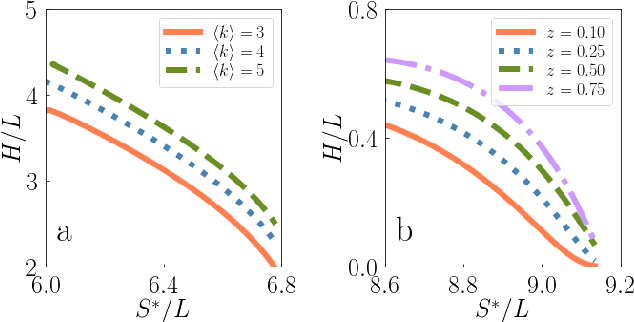Dmitri Krioukov
Classical Information Theory of Networks
Aug 14, 2019

Abstract:Heterogeneity is among the most important features characterizing real-world networks. Empirical evidence in support of this fact is unquestionable. Existing theoretical frameworks justify heterogeneity in networks as a convenient way to enhance desirable systemic features, such as robustness, synchronizability and navigability. However, a unifying information theory able to explain the natural emergence of heterogeneity in complex networks does not yet exist. Here, we fill this gap of knowledge by developing a classical information theoretical framework for networks. We show that among all degree distributions that can be used to generate random networks, the one emerging from the principle of maximum entropy is a power law. We also study spatially embedded networks finding that the interactions between nodes naturally lead to nonuniform distributions of points in the space. The pertinent features of real-world air transportation networks are well described by the proposed framework.
Revealing the Autonomous System Taxonomy: The Machine Learning Approach
Apr 06, 2006



Abstract:Although the Internet AS-level topology has been extensively studied over the past few years, little is known about the details of the AS taxonomy. An AS "node" can represent a wide variety of organizations, e.g., large ISP, or small private business, university, with vastly different network characteristics, external connectivity patterns, network growth tendencies, and other properties that we can hardly neglect while working on veracious Internet representations in simulation environments. In this paper, we introduce a radically new approach based on machine learning techniques to map all the ASes in the Internet into a natural AS taxonomy. We successfully classify 95.3% of ASes with expected accuracy of 78.1%. We release to the community the AS-level topology dataset augmented with: 1) the AS taxonomy information and 2) the set of AS attributes we used to classify ASes. We believe that this dataset will serve as an invaluable addition to further understanding of the structure and evolution of the Internet.
 Add to Chrome
Add to Chrome Add to Firefox
Add to Firefox Add to Edge
Add to Edge